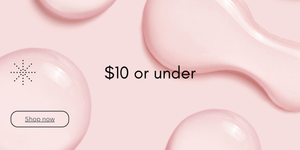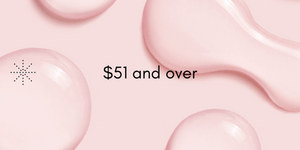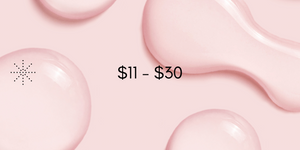Rosacea Guide: Causes, Symptoms, and the Best Products for Relief
Is your face often flushed, feeling irritated, and you’re not sure why? Let’s dig into what might be causing it—and how to help calm things down.

Table of content:
- What is rosacea, and what causes it?
- Recognizing rosacea symptoms
- Rosacea treatment options
- Ingredients and products that can help in your skincare routine
Dealing with rosacea can be tough—it’s often stubborn, frustrating, and not easy to identify. Especially in early stage, rosacea might just show subtle signs from time to time, making it tricky to recognize clearly.
The good news? You can start making a difference right away by treating your skin as sensitive skin. The flip side is that without proper care, it can gradually worsen. But don’t worry; in this guide, we’ll walk you through the essentials of rosacea and the steps you can take at home to manage its symptoms.
What is Rosacea, and What Causes It?
Rosacea affects about 10% of the population, according to a 2016 study. It’s more common than many people think and can impact confidence and comfort due to persistent redness, sensitivity, and sometimes visible tiny veins (called spider veins) on the skin. In some cases, rosacea can even cause pimple-like bumps called "rosacea acne."
It’s most commonly seen in light-skinned women between 30 and 50, especially those with light hair and eyes, and may often show up during menopause. Men can get rosacea too, though it’s less common—and sometimes more severe.
While the exact cause of rosacea is still unknown, research suggests links to a weakened immune system, nerve and blood vessel health, and sometimes changes in the skin’s natural microbiome.
There are also certain triggers that might prompt rosacea flare-ups. Here are a few common ones to be aware of:
- Hot drinks and spicy foods
- Alcohol, especially red wine
- Extreme heat or cold
- Sun exposure or wind
- Intense exercise
- Strong emotions
- Certain medications
- Harsh skincare products
Recognizing rosacea in its early phase can help, as the symptoms are easier to manage when they’re mild. If you’re wondering whether you might have rosacea, start with a gentle, sensitive-skin-friendly routine. This approach might even prevent symptoms from worsening. Don’t worry – in this article, we’ll guide you through the best ingredients and products available at AU Beauty Bazaar to help you manage your skin with confidence.
For more advanced symptoms, though, it’s best to see a dermatologist who can provide tailored advice and help you get control over your symptoms.
Rosacea’s Primary Signs
If you notice that your nose and cheeks are often red, and they sometimes get flushed, it could be a sign of rosacea. You might also see visible veins that become more pronounced over time or those bump-like pustules we mentioned earlier.

Beyond these primary signs, there are other, less visible symptoms to watch for, such as:
- Occasional extreme skin sensitivity
- A burning or itching sensation
- Persistent red patches
- Eye issues: Some people with rosacea (about 50%) experience eye irritation or swollen eyelids
- Dry, flaky patches (even if your skin type is typically oily)
Treatment Options for Rosacea
If a dermatologist has confirmed your rosacea and it’s more severe, there are prescription treatments that can help with inflammation and even provide some antibacterial effects. Meanwhile, a gentle skincare routine can work wonders to calm redness, soothe the skin, and strengthen your skin barrier over time.
If you have mild rosacea, a gentle routine could be enough to keep things under control—especially if you also minimize your triggers as much as possible. This may involve making a few lifestyle changes, but these steps can help prevent future flare-ups.
Ingredients That Can Help in Your Skincare Routine
Now, let's talk about a few ingredients that can support rosacea-prone skin.
1. Sunscreen
No matter your skin type, a broad-spectrum sunscreen should be the foundation of any skincare routine. For rosacea, it's even more crucial since UV rays not only contribute to aging but can also make redness worse. You can either choose a mineral sunscreen with titanium dioxide and zinc oxide or opt for a chemical sunscreen, as long as you select formulas specifically designed for sensitive skin to minimize irritation.
For an ideal sunscreen choice, try Beauty of Joseon Relief Aqua Fresh Rice + B5, a hydrating, weightless formula that provides a refreshing, non-sticky finish while soothing and nourishing your skin with Panthenol and Rice Seed Water—perfect for rosacea-prone skin under the sun.
2. Gentle Retinoids
Low-dose retinoids can also be helpful. They aid in cell turnover and help with rosacea acne. Among retinoids, retinol or retinal (known for its antibacterial properties) are gentle choices that can suit sensitive skin well.
3. Mild exfoliants, like BHA, PHA, or Mandelic Acid
A low-dose BHA (about 1%) or a PHA exfoliant is great for fighting redness and keeping skin calm. Mandelic acid, in particular, is gentle enough for sensitive skin and can work wonders for evening skin tone while helping prevent blemishes.
For a gentle yet effective exfoliation, try the ROUND LAB Pine Calming Cica Toner. Infused with pure Pine extracts, LHA, PHA, and triple Hyaluronic Acid, this toner soothes and hydrates your skin while providing a mild exfoliating effect—perfect for calming rosacea-prone skin without any stickiness.
4. Skin-Soothing Ingredients (like antioxidants and plant extracts)
Certain extracts are known for calming irritated skin, like green tea, licorice root, allantoin, aloe vera, and Beta-Glucan. These, alongside Centella Asiatica, can be a blessing for rosacea-prone skin.
For ultimate calming and soothing, try the SKIN1004 Madagascar Centella Asiatica 100 Ampoule. Packed with 100% pure Madagascar Centella, this ampoule deeply soothes, hydrates, and helps repair the skin barrier, while calming redness and promoting an even skin tone—perfect for rosacea-prone skin.
5. Barrier-Strengthening Hydrators
Look for moisturizers or serums packed with barrier-loving ingredients like ceramides, hyaluronic acid or panthenol.
For a deeply hydrating and barrier-strengthening boost, try Pyunkang Yul Ultimate Calming Solution Cream. This nourishing cream is packed with five types of ceramides and five types of hyaluronic acids to enhance hydration and repair your skin’s moisture barrier. It also features Centella Asiatica to calm irritation, along with soothing extracts like Honeysuckle Flower and Tea Tree to keep your skin feeling balanced and smooth.
Final Thoughts: Take Control of Your Rosacea
Managing rosacea can feel challenging, but with the right approach, you can take charge of your skin’s health. By using gentle, soothing ingredients and being mindful of triggers, you can reduce flare-ups and maintain a calm, balanced complexion. Stay consistent with your routine, and remember, it's all about small, steady steps toward clearer, more comfortable skin.










Leave a comment